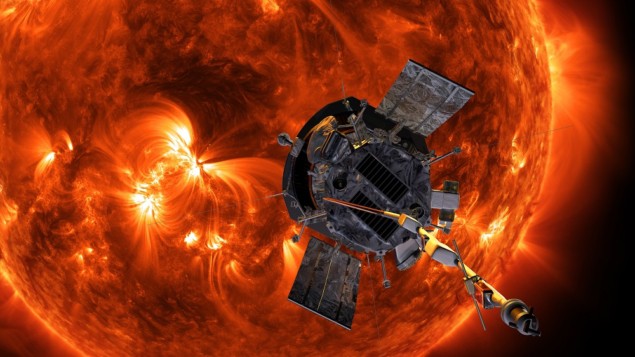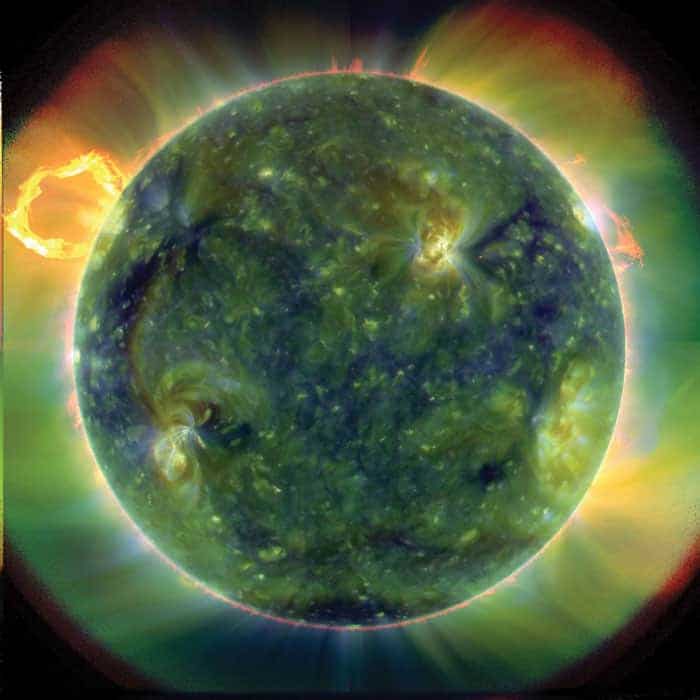
NASA has launched a mission to study the Sun’s atmosphere and solar wind that will come far closer to our star than any other craft before. The Parker Solar Probe took off today from NASA’s Kennedy Space Center in Florida at 03:33 local time aboard a Delta IV rocket. During the mission’s seven-year lifespan, it will perform 24 orbits around the Sun coming as close as 6.1 million kilometres to its surface – well within the orbit of Mercury.
We’ll be going where no spacecraft has dared go before – within the corona of a star
Nicky Fox
The nearest probe to have reached the Sun was the Helios 2 spacecraft, which in 1976 came within 44.5 million kilometres of the Sun’s surface. The 635 kg Parker Solar Probe will come near enough to the Sun allowing it to watch the solar wind speed up from subsonic to supersonic and trace how energy and heat move through the corona. This will allow scientists to gain information about what accelerates the solar wind as well as the high-energy particles coming from the Sun, known as solar energetic particles.
To do so, the Parker Solar Probe will carry four instruments. One instrument, dubbed FIELDS and built by the Space Sciences Laboratory at the University of California, Berkeley, will measure the electric field around the spacecraft with five 2 m-long antennas made of a niobium alloy that can withstand high temperatures. FIELDS will also contain three small magnetometers to measure magnetic fields. The other three instruments are an imager and two dedicated particle analysers.
Hotter than the Sun
To withstand the intense temperatures, which can reach almost 1400 C, the spacecraft and instruments will be protected by a 11.4 cm carbon-composite shield. “We’ll be going where no spacecraft has dared go before – within the corona of a star,” says Parker Solar Probe project scientist Nicky Fox from Johns Hopkins Applied Physics Laboratory. “With each orbit, we’ll be seeing new regions of the Sun’s atmosphere and learning things about stellar mechanics that we’ve wanted to explore for decades.” Living with a star
The mission is named after physicist Eugene Parker who was born in 1927 and made several breakthroughs of our understanding of the solar wind and also explained why the Sun’s corona is hotter than its surface. Indeed, it is the first NASA mission to be named after a living scientist. Earlier this year the American Physical Society awarded him the Medal for Exceptional Achievement in Research.



